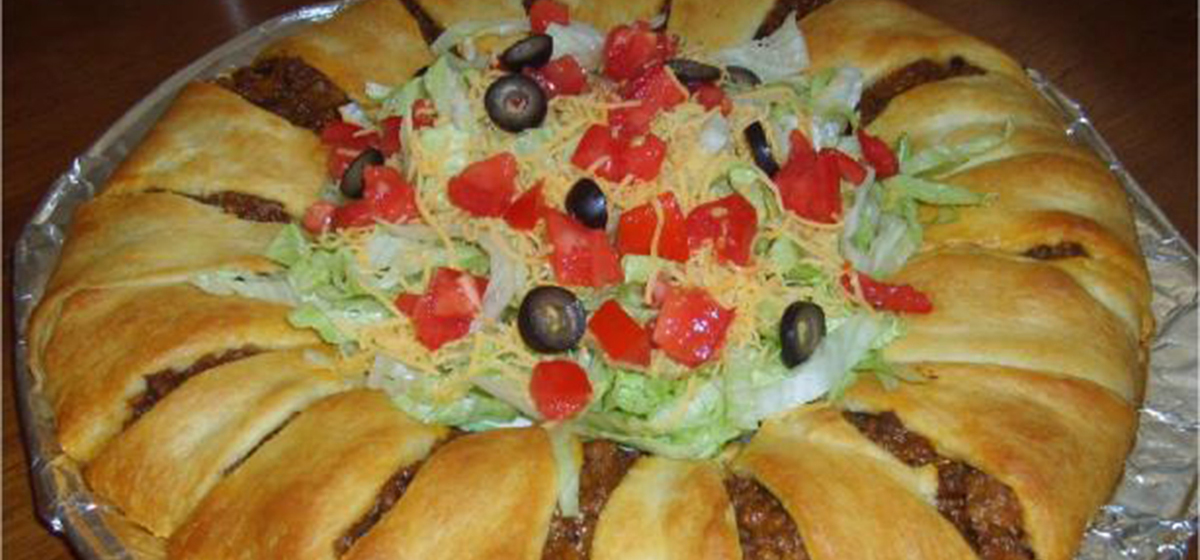 Photos by Kelly Sue Photography
Photos by Kelly Sue Photography
In 1997, Rose Sparks sat at a table with nine doctors at Texas Children’s Hospital discussing the plight of her five-year-old daughter Lauren. The news was dismal. Lauren had been diagnosed with aplastic anemia, a rare congenital condition caused by the bone marrow’s inability to produce adequate blood cells. Lauren needed an immediate bone marrow transplant to save her life. All the members of the Sparks family had the relatively-rare B+ blood type, but first Lauren’s father and mother, and then her three older brothers had been eliminated as possible bone marrow donors.
“One of the surgeons’ pager kept going off and going off, and he was ignoring it,” Rose says. “I was just crying, crying, crying. We had run out of time to give her any hope.” The surgeon finally went out in the hallway, and when he came back in, he had good news. “He said, ‘Her twin brother is a perfect match!’ That’s what the pages were about,” Rose says. “God was saying, ‘Hey, hey! Listen to me here!’”
Five days later, five-year-old Lane donated blood marrow to save his twin sister’s life. Although it was the first time he came to her rescue, it would not be the last.
Unexpected additions to the family
 The Sparks family already had three boys—Brian, 14, Chris, 12, and Jeff, 9—when Rose got the surprising news that she was pregnant with twins. An interior designer, Rose was already busy with her career, the family’s horses and steers, and her three sons’ athletic endeavors. “I was blown away,” she recalls.
The Sparks family already had three boys—Brian, 14, Chris, 12, and Jeff, 9—when Rose got the surprising news that she was pregnant with twins. An interior designer, Rose was already busy with her career, the family’s horses and steers, and her three sons’ athletic endeavors. “I was blown away,” she recalls.
When the twins were five years-old, Lauren bumped her head at preschool; the site of the injury was bruised and swollen for days. A doctor assured Rose that Lauren would be fine, but a cat bite a few weeks later was more ominous. “The next morning, she had fever, and her hand was triple the size it was supposed to be,” Rose says. She called a friend, an orthopedic surgeon, who instructed Rose to take Lauren to the hospital immediately.
Lauren required surgery to relieve the swelling in her hand, so bloodwork was ordered. When lab reports showed an alarmingly low platelet count, doctors suspected leukemia; however, Lauren was soon diagnosed instead with aplastic anemia.
 When Lane was deemed a perfect match to be a bone marrow donor, Texas Children’s Hospital staff members took the twins on a wagon tour of the surgical areas to prepare them for the procedure. Family members were not surprised that young Lane was so willing to help Lauren. “He knew what he was doing,” Rose says. “He has always been very attentive to his sister.”
When Lane was deemed a perfect match to be a bone marrow donor, Texas Children’s Hospital staff members took the twins on a wagon tour of the surgical areas to prepare them for the procedure. Family members were not surprised that young Lane was so willing to help Lauren. “He knew what he was doing,” Rose says. “He has always been very attentive to his sister.”
The next year was a blur for the Sparks family. “I remember picking up the cat and the cat bite and the swollen hand, but I don’t remember very much after that,” Lauren says. She was given chemotherapy to wipe out her own immune system before receiving Lane’s bone marrow; then bone marrow was extracted from Lane’s hip and given to Lauren via IV. “It has a homing device,” Rose says with a smile. “It knows where to go.” Because her immune system was so fragile, Lauren could not have any visitors other than her parents. “I remember talking to her on the phone,” Lane says.
“It was heart-wrenching to have two of your babies hurting and scared,” Rose says. Lane soon went home and resumed his usual routine, but Lauren did not. She was at Texas Children’s Hospital for four months, and returned many times during the following year because of complications. Eventually, life returned to normal. Annual check-ups at Texas Children’s Hospital showed no cause for alarm. Little did Rose suspect that Lauren’s health would take a drastic turn for the worse when she was a teenager.
Another rare diagnosis
 When Lane and Lauren were 16, Rose noticed that Lauren’s skin became mottled, almost resembling freckles. Then, her fingernails became cracked and thin, and seemed to disappear into the nailbeds. Lauren also began losing hair. Rose tallied the symptoms and remembered that Lauren had suffered several broken bones during the past few years: an arm, a shoulder, and a leg. “And she was just doing simple tasks,” Lane says. For example, her arm was broken when reining a horse; she tripped in a hallway and broke her femur. Rose took Lauren to a variety of physicians.
When Lane and Lauren were 16, Rose noticed that Lauren’s skin became mottled, almost resembling freckles. Then, her fingernails became cracked and thin, and seemed to disappear into the nailbeds. Lauren also began losing hair. Rose tallied the symptoms and remembered that Lauren had suffered several broken bones during the past few years: an arm, a shoulder, and a leg. “And she was just doing simple tasks,” Lane says. For example, her arm was broken when reining a horse; she tripped in a hallway and broke her femur. Rose took Lauren to a variety of physicians.
 A dermatologist at Texas Children’s Hospital finally provided a diagnosis. A biopsy of a sample of tissue from the inside of Lauren’s mouth indicated Lauren has dyskeratosis congenita, a progressive genetic disorder so rare, it is estimated to affect only one in one million people. People who have dyskeratosis congenita have short telomeres (located on chromosomes). In unaffected individuals, telomeres shorten with age, but the short telomeres of people affected with dyskeratosis congenita cause the effects of early aging, including organ and bone marrow failure.
A dermatologist at Texas Children’s Hospital finally provided a diagnosis. A biopsy of a sample of tissue from the inside of Lauren’s mouth indicated Lauren has dyskeratosis congenita, a progressive genetic disorder so rare, it is estimated to affect only one in one million people. People who have dyskeratosis congenita have short telomeres (located on chromosomes). In unaffected individuals, telomeres shorten with age, but the short telomeres of people affected with dyskeratosis congenita cause the effects of early aging, including organ and bone marrow failure.
As Lauren’s health failed, she required multiple blood transfusions. “At first, it was every six months, and then every three months, and then monthly and then bi-weekly,” Lane says. The Sparks family called these transfusions “fill-ups.” During this time, Lauren was a competitive barrel racer on the high school rodeo circuit. “Lauren would have to go get a ‘fill-up’ before we left,” Rose recalls. “We left town, and she would win, and we would come home! People didn’t realize what she had to go through to get where she was.”
 Fortunately, Lane was able to come to his sister’s rescue again. In July 2015, he donated stem cells that doctors hope will halt the progression of Lauren’s dyskeratosis congenita. To prepare for the donation, Lane received a series of nine daily injections to make his bone marrow prolific enough to spill into his bloodstream. “Every morning before work, I would drive to Houston and get a shot,” he says. The shots gave him flu-like symptoms.
Fortunately, Lane was able to come to his sister’s rescue again. In July 2015, he donated stem cells that doctors hope will halt the progression of Lauren’s dyskeratosis congenita. To prepare for the donation, Lane received a series of nine daily injections to make his bone marrow prolific enough to spill into his bloodstream. “Every morning before work, I would drive to Houston and get a shot,” he says. The shots gave him flu-like symptoms.
On the day of the donation, blood went from Lane’s right arm through a centrifuge that separated the blood into its components. Stem cells were removed, and the remaining blood was returned to Lane’s left arm. The process took almost all day, and Lane’s achiness went away almost immediately. After Lauren received the stem cells, her bloodwork showed improved cell counts and her need for transfusions was greatly diminished. The Sparks family is praying that the stem cell transplant will improve Lauren’s health; however, because of the deterioration of her organs that has already taken place, she might one day need a kidney transplant. A donor has already stepped forward. “I will do it,” Lane promises.
Barrel racing therapy
Throughout Lauren’s illness, barrel racing has helped her cope. “When I can’t ride, it’s very depressing,” she admits. “When I win, that boosts me up a lot.”
 Rose, a professional barrel racer herself, trains horses for the event. At a rodeo one day, Belle, the quarter horse Rose usually rode, kicked Lauren’s horse in the leg, causing it to swell. Rose offered Belle to Lauren, and the rest, as the saying goes, is history.
Rose, a professional barrel racer herself, trains horses for the event. At a rodeo one day, Belle, the quarter horse Rose usually rode, kicked Lauren’s horse in the leg, causing it to swell. Rose offered Belle to Lauren, and the rest, as the saying goes, is history.
“She has taken me everywhere,” Lauren says. Horse and rider seem to have a special connection; Belle even seems to sense when Lauren wins a barrel race. “She’s special. She’s the queen and she knows it,” she says. “She’s spoiled,” Lane says with a smile.
Lauren was a competitive barrel racer in high school, and then joined the Lone Star College-Montgomery rodeo team in 2011 for its first year of competition. The Sparks family is grateful to Shooter’s Station, which sponsored Lauren, and James Zipperer, an economics professor at LSC-Montgomery who, as the faculty adviser for the new rodeo team, took Lauren under his proverbial wing. “He got everything done for us,” Rose says.
 While the twins were students at LSC-Montgomery, Lane, although not a competitor, became president of the college’s rodeo team and was recognized as the new student leader of the year. Meanwhile, Lauren was winning barrel races at collegiate rodeos. “She carried the team, that’s for sure,” Lane says proudly. Lauren’s favorite intercollegiate rodeo was at Texas A&M, where she won the barrel racing event. She estimates that there are 70 to 80 barrel racers in the southern region of the collegiate rodeo circuit, so she is proud to have qualified as one of just three women to represent the southern region at the College National Finals Rodeo in Casper, Wyoming in 2011.
While the twins were students at LSC-Montgomery, Lane, although not a competitor, became president of the college’s rodeo team and was recognized as the new student leader of the year. Meanwhile, Lauren was winning barrel races at collegiate rodeos. “She carried the team, that’s for sure,” Lane says proudly. Lauren’s favorite intercollegiate rodeo was at Texas A&M, where she won the barrel racing event. She estimates that there are 70 to 80 barrel racers in the southern region of the collegiate rodeo circuit, so she is proud to have qualified as one of just three women to represent the southern region at the College National Finals Rodeo in Casper, Wyoming in 2011.
After two years at LSC-Montgomery, Lane and Lauren went on to attend Sam Houston State University. Today, Lane stages newly-constructed homes in Houston, Austin, San Antonio and Dallas, while Lauren is a card-carrying member of the Women’s Professional Rodeo Association. Although she has won many cash prizes, she is humble about her barrel racing success. Rose, however, is more forthcoming.
“She has just done remarkably well to have had the bumps in the road she has had to go over all the time,” Rose says. “We are her cheerleaders. We are so proud of her for the things she has accomplished.”



